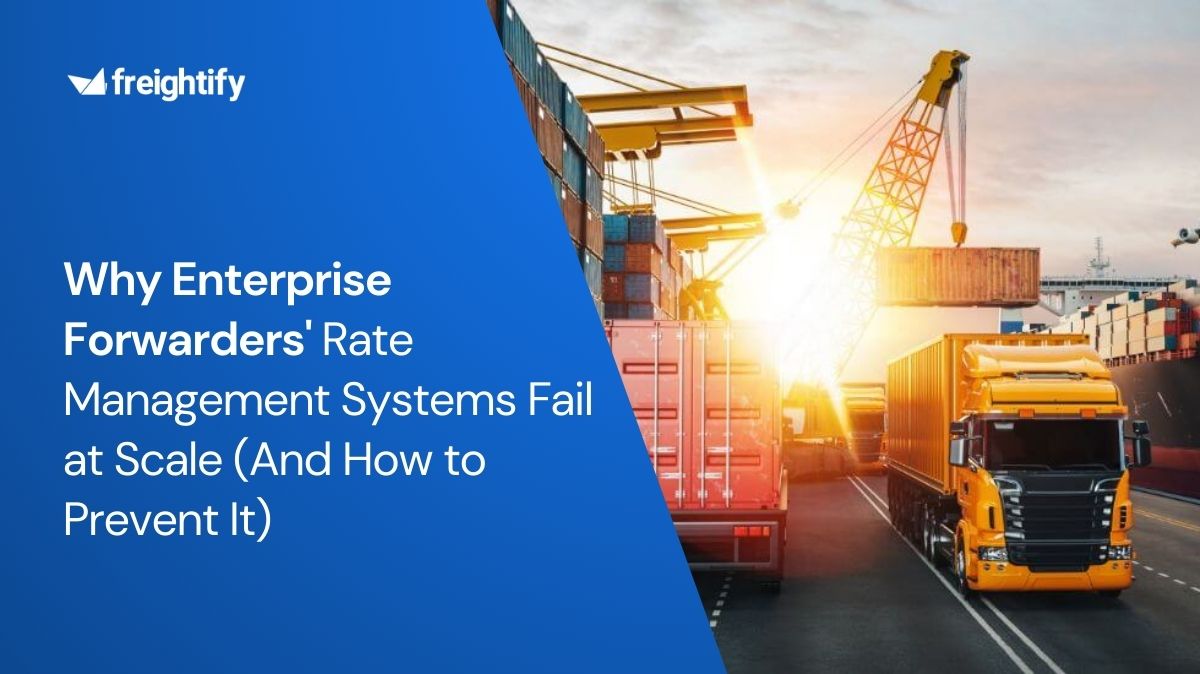The supply and demand mechanism within the freight industry has been skewed from the last year. This cyclic bubble continues to cause an imbalance in the industry, ultimately having a drastic impact on the rate of any maritime freight spot.
It cannot be forgotten that about 80% of the goods the world consumes are carried on ships. The onslaught of the pandemic, a lack of containers, and labor shortage have reduced the available supply, and hence, prices have skyrocketed.
Overview of the volatility of freight rates(2020-2021) The spot rates on the Shanghai-Europe route were less than $1,000 per TEU in June 2020. However, when the economy slowly started reviving after the sudden pandemic impact, the prices leaped to about $4,000 per TEU within six months. There was a further double-fold increase when the spot rate rose to $7,395 by the end of July 2021, which has continued to increase thanks to holiday shopping. Since March 2021, rates on the transatlantic have spiked by over 280% and show no signs of normalizing.
In fact, UNCTAD’s analysis establishes that the current surge in container freight rates has a double-pronged impact on the cost of consumer goods and production decline. If prices continue to increase at this level, there could potentially be an increase in the global import rates by 11% and consumer prices by 1.5% between now and 2023.
Additionally, a 10% increase in container freight rates is expected to decrease industrial production in the United States and the Euro area by more than 1%, while in China, production is expected to decrease by 0.2%.
So, what have the dominant world powers and their respective governments done to curb these extreme pricing disparities that ultimately affect the common man?
The answer would be that arguably nothing too constructive has come out of their legislative reforms.
Let us help you with your journey
Your one-stop solution to retrieve all live carrier rates & schedules in seconds!
American-based freight rate reforms The recently proposed Ocean Shipping Reform Act of 2021 has garnered support from 152 companies and trade associations. They argue that the current law needs updating after 20 years to reflect industry changes, including carrier consolidation and the growth of alliances.
This regulation is expected to support American exports by establishing reciprocal trade opportunities to help reduce the United States’ longstanding trade imbalance with China and other Asian countries. By requiring ocean carriers to adhere to minimum service standards that meet the public interest, they cannot refuse to carry goods from US exporters. Limitations have been placed on the volume of detention and demurrage charges that carriers can charge.
Eventually, carriers are expected to share their results quarterly, allowing for transparency and giving governing bodies access to scrutinize and audit the practices in case of anomalies.
(Source - Pexels) The White House has published statements calling for free and fair trade – especially for the US Agri-based producers who rely on exports for over 20% of their sales. This executive order has encouraged the Federal Maritime Commission to vigorously enforce the prohibition against ocean carriers charging unfair fees to exporters and importers.
Additionally, under the new policy, the ports will charge ocean carriers for containers sitting over a grace period. The fee is $100 per container, which increases in $100 increments per day until the container leaves the terminal. This container dwell fee is applicable when containers overstay beyond 9 days.
Though the implementation of this fee has been pushed to almost 3 weeks further, the effects can already be witnessed. Since the fee was announced on October 25th, 2021, the twin ports at LA have seen a decline of 26% combined in aging cargo on the docks.
(Source - Splash247) Further, since the pandemic, stimulus checks provided to the citizens resulted in a 4.2 percent month-on-month increase in consumer spending in March 2021. The $4.5 trillion in stimulus spending offered the citizens the ability to binge shop. This resulted in the required stock levels rising rapidly – something that was not predicted until 2027. This finally fuels a rise in prices irrespective of the reforms that could be passed.
EU-centric Freight Rate Reforms In the past year, the EU-based governing councils have been anxious about environmental concerns, specifically their carbon footprint. Their recently launched reform looks to penalize ocean carriers for not meeting the minimum standards to reduce carbon emissions.
This policy, in the foreseeable future, can create a downward spiral in the available supply of cargo ships. The freight industry is currently plagued by a shortage of vessels as many are idle at ports waiting for clearance . Further, most of the new ships ordered to compensate for the additional supply are to be delivered by China only in 2023. Hence, a further reduction in the available vessels due to carbon emission constraints will only increase spot prices.
In the meantime, ocean carriers have tried to take matters into their own hands. For example, the French container shipping company CMA CGM announced a couple of months ago that it would halt all spot rate increases through February 1st, 2022. Carriers are aware that they are riding on a cyclic high, and hence, they want to prioritize the long-term relationships that they have with customers.
Similarly, the German shipping company Hapag-Lloyd has also suspended all increases to the spot rates.
Let us help you with your journey
Instantly procure spot rates from 30+ LCL and FCL Carriers & NVOCCs
Do these reforms solve the existing problem? Policymakers would need to implement reforms to make trade easier and less costly. A possible solution could also be how port calls and liner schedules are monitored. The aim of these reforms should be to promote transparency and encourage collaboration.
(Source - marine-insight.com) To help reduce the likelihood of a similar situation in the future, the UNCTAD policy brief highlights three issues that need attention:
Advancing trade facilitation reforms Improving maritime trade tracking and forecasting, and Strengthening national competition authorities However, by the time reform is conceptualized and written to when it is passed, there are high chances of these reforms already becoming extinct. Economists also feel that the new frameworks that the government is creating with the 2021 scenario in mind might not be the right fit as the volumes witnessed now is not the usual norm – it is just a part of the cyclic reactions to supply and demand fluctuations, post the pandemic.
Simplifying this concept into a more relatable argument: it is certainly not advisable to clear down a forest and build a whole township basis the additional footfall from seasonal holiday goers. Excess supply or capacity could also cause downward spirals that the world does not need.
How can digital solutions help in the interim? With digital tools and real-time data available readily, shippers and freight forwarders need not bear the complete brunt of this pricing catastrophe. Instead of raising quotes as a reaction to the weekly rate hikes, companies can be proactive and prepare for the future. Business strategies and decision-making can include multiple well-researched backup plans that do not allow the daily business to suffer.
The concern of drastic prices changes and increasing rates can be counter-attacked by taking benefits from the digital solutions that are readily available. Here is how Freightify can save freight forwarders and carriers from losing out due to complex quoting requirements.
Freightify provides a single platform with visibility to all your rates across vessels, destinations, and cargo requirements. It simplifies complex carrier information into an understandable format that is user-friendly.
The real-time insights that it provides can help compare rates and quotes accordingly. Trend analysis can help with better decision-making. Customers can track quotations that they have submitted. They can find schedules for the future, keeping date ranges and ports of call as the key filters.
With API functionality, the Freightify solution improves digital connectivity and brings in operational efficiency. It reduces the time spent on admin processes by over 80%. It is basically a quick way to book carriers in the spot market where rates are changing by the minute.
FAQ What is the year-on-year increase in freight SPOT rates in 2021? The price has climbed over 500% in the last year. For comparison, the prices stood at just under USD 11,000 in the last week of July 2021. Within a month, during the first week of August 2021, container shipping rates from China to the United States peaked drastically to approximately USD 20,000 per 40-foot box.
What is the major reason for the increase in freight rates? Apart from the traditional drivers (like peak shopping seasons and the cost of fuel) that affect the rate of cargo shipping, the pandemic backlash has had a severe effect. The shortage of containers, labor constraints, lockdowns in the Asian countries, and unpredictable consumer buying patterns have increased the costs - making freight rates volatile.
What is the difference between contract and SPOT rates? A SPOT rate is a price that a shipper will bear as a one-time cost to transport a shipment between two destinations at the current market pricing. This is a dynamic price that is volatile. A Contract Rate is when the shippers have contracts with the carriers and pay basis the price negotiated up to a year beforehand. Regular and planned shipping transactions usually have contracted rates.




















